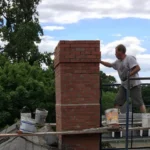A leaking toilet pipe is a homeowner’s nightmare, causing water wastage, potential damage, and sleepless nights due to that constant drip. Understanding the culprits behind these leaks and taking simple preventive steps can save you from these woes.
In this concise article, we will explore the common causes of leaking toilet pipes and provide tips on how to prevent them. From worn-out seals to high water pressure, we’ve got you covered.
So, let’s dive into the world of toilet leaks and discover how a little knowledge can go a long way in ensuring a dry and hassle-free bathroom.
Old and Worn Out Seals
One of the most common causes of a leaking toilet pipe is old and worn-out seals. Inside your toilet tank, there are various rubber seals and gaskets that help maintain a watertight connection between the different parts.
Over time, these seals can deteriorate due to exposure to water, chemicals, and regular wear and tear. When these seals degrade, they can no longer effectively prevent water from escaping, leading to leaks.
To prevent seal-related leaks, it’s essential to perform regular maintenance on your toilet. Inspect the seals for signs of wear and tear, such as cracks or brittleness.
If you notice any issues, replace the seals promptly. This simple maintenance task can save you from significant water wastage and potential damage to your bathroom.
Loose Bolts and Nuts
Toilets are secured to the floor with bolts and nuts, which can become loose over time. When these fasteners aren’t tightened properly, water can seep out around the base of the toilet, causing leaks. Loose bolts and nuts can also lead to wobbling toilets, which can further damage the wax ring and wax seal, resulting in more substantial leaks.
Check the tightness of the bolts and nuts securing your toilet to the floor. If you notice any wobbling or feel that they are not adequately secured, tighten them carefully. Be cautious not to overtighten, as this can damage the toilet or the floor.
Regularly inspecting and tightening these fasteners can prevent leaks and maintain a stable toilet.
Cracked Toilet Tank or Bowl
Cracks in the toilet tank or bowl are one of the most common toilet pipe leak reasons. These cracks can occur due to various reasons, such as physical damage or manufacturing defects. When your toilet has cracks, water can slowly seep through and create a mess in your bathroom.
Unfortunately, preventing cracks in the toilet tank or bowl is challenging, as they often result from physical damage or manufacturing flaws. However, you can reduce the risk by avoiding rough handling or placing heavy objects on the toilet. Be cautious when installing a new toilet, and consider professional installation to minimize the risk of damage.
Faulty Wax Ring
The wax ring is a crucial component that forms a watertight seal between the base of the toilet and the sewer drain. If the wax ring becomes damaged or deteriorates over time, it can lead to significant leaks and even sewage backup in your bathroom.
Replacing the wax ring is a bit more involved than some other maintenance tasks, and it’s recommended to hire a professional plumber for this job. However, if you’re experienced with plumbing repairs, you can do it yourself.
Regularly inspect the wax ring for signs of damage or wear and replace it if necessary. This proactive approach can prevent messy and unsanitary leaks in your bathroom.
Corroded Pipes
Corrosion of pipes is a common issue in older homes. When pipes corrode, they can develop small holes or cracks that allow water to escape. If the pipes near your toilet are corroded, this can lead to leaks.
To prevent leaks caused by corroded pipes, consider replacing old, corroded pipes with newer materials like PVC or PEX. Regularly inspect your plumbing system for signs of corrosion and address any issues promptly. While this may be a more extensive and costly preventive measure, it can save you from the headache of dealing with leaks and water damage.
High Water Pressure
High water pressure can put excessive stress on your plumbing system, including the pipes and seals in your toilet. Over time, this can lead to leaks. High water pressure can cause the supply lines and valves to weaken and develop leaks as well.
To prevent leaks caused by high water pressure, consider installing a pressure-reducing valve (PRV) in your plumbing system. A PRV can help regulate the water pressure, reducing stress on your toilet and other plumbing components. Additionally, you can regularly check your water pressure using a pressure gauge and adjust it to a safe and optimal level.
Blocked or Clogged Pipes
Sometimes, leaks in your toilet pipe can be a result of blockages or clogs in the pipes. If something gets stuck in the pipes, it can create pressure and cause a leak in the connections or seals.
Preventing blockages in your toilet pipes involves being mindful of what you flush down the toilet. Avoid flushing items like paper towels, sanitary products, or excessive toilet paper. Use a plunger or an auger to clear minor clogs before they become more severe and cause leaks.
Regular maintenance, including pipe inspections, can help detect and address blockages before they lead to leaks. For a more thorough inspection and professional plumbing services, you can visit https://www.alleasternplumbing.com.au/plumber-pakenham
Deteriorating Flush Valve
The flush valve is another essential component in your toilet. It controls the release of water from the tank into the bowl during each flush. Over time, the flush valve can deteriorate, leading to leaks or inefficient flushing.
To prevent issues with the flush valve, regularly inspect it for signs of wear and tear. If you notice any problems, replace the flush valve or the associated components. This will ensure that your toilet flushes correctly and doesn’t leak water during and after each use.
Learn Common Causes of a Leaking Toilet Pipe and How to Prevent Them
Preventing a leaking toilet pipe is essential for conserving water and avoiding costly repairs. By regularly inspecting and maintaining your toilet’s components, such as the wax ring, bolts, and supply lines, you can enjoy a leak-free bathroom. Handling your toilet with care and monitoring water pressure further contribute to a trouble-free plumbing system.
With these simple steps, you can save both water and money, ensuring a dry and worry-free bathroom.
For more helpful articles, check out the rest of our website.
Read Also: The Key Steps On How To Fix A Leaking Roof From The Inside







